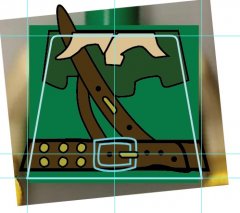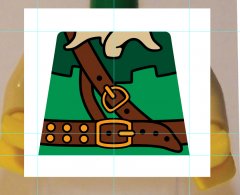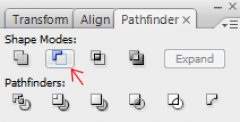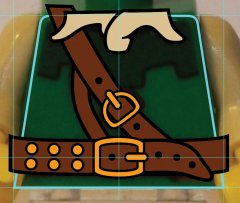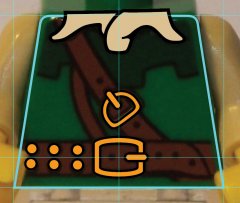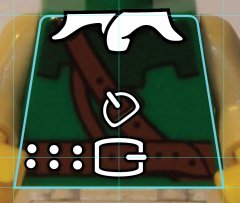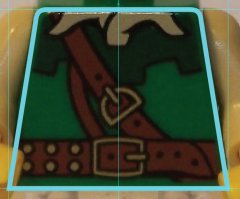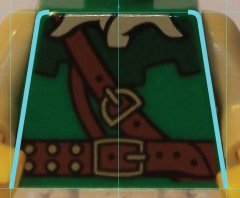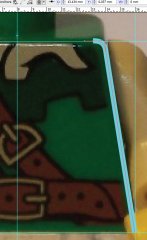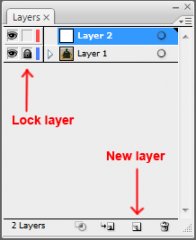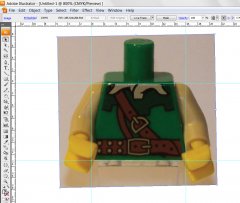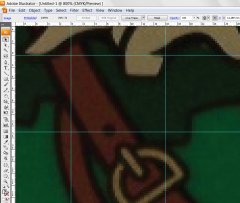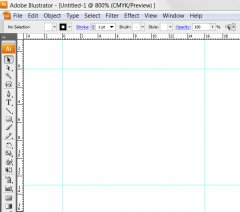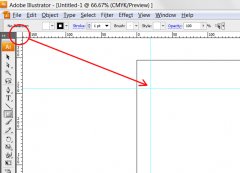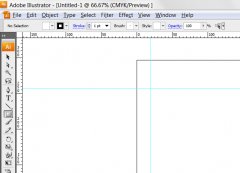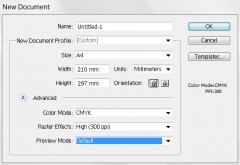Search the Community
Showing results for tags 'engine'.
Found 122 results
-

Single crank W16 engine
Zerobricks posted a topic in LEGO Technic, Mindstorms, Model Team and Scale Modeling
Hi After some fiddling I came up with this idea for a single crank W16 engine: Each crank uses a #3 connector to comepnsate for the piston offsets: And Finally the top view of the engine: Hopefully someone can build this baby in real life and provide feedback LDD file: https://bricksafe.com/files/Zblj/w16-engine/W16 engine.lxf -
Shay geared steam locomotive and silver ore mining train - MOD of a MOC
Murdoch17 posted a topic in LEGO Train Tech
This type of geared type loco is called a "Shay" (specifically a type "A", which means two pistons and two trucks) and were named after their original inventor of the type, Ephraim Shay. These loco's could only go about 20 miles per hour (or about 32 Kilometers per hour, if that's your thing) at top speed, and were very steady on rough track, hauling logging and mining trains up grades that would easily stall conventional steamer types. You can read more about Shay geared steam locomotive's at Wikipedia. Please NOTE: The design of the original Shay I redid into my version was by Stephan Pakbaz over on Flickr, as seen below. (His LDD file allowed me to build my version) as seen here. The 1 x 1 tiles on either side of the coal bunker are supposed to be printed with the number "4" The Shay type only has pistons on one side, with the other side being kinda sparsely decorated. Usually, their would be various accessories and such on this side, but i liked it better devoid of any clutter. The Shay geared steam loco bends in a odd way... but at least it works. NOTE: The angle shown is quite a bit more severe curve than the loco will ever have to handle.... but it looks pretty cool! This raw ore car was modeled after a custom Brick Link item by @wildchicken13 except mine is narrower and uses two wheels for a Wild West flair. You can see the original item that inspired me here. The caboose follows my standard pattern for my Western trains, with only a few color swaps and a missing cupola on top to set it apart from the others. Here we see the mining train consisting of four silver ore cars and a caboose, without the Shay. This is my latest (and most likely last) Western styled train, and it will join my other four steamers and their trains in my Wild West collection sometime later in 2018. (The reason I say "last" is that I've run out of railroad-related ideas for my Wild Western layout and am planning on focusing on the updated Native American camp, revised Fort Legoredo and the remaining frontier town buildings after this.) As you may have suspected, the ore the mining train holds comes from my well-protected silver mine, which can be seen in it's own topic. ...and as usual, comments, questions, complaints and suggestions are always welcome! -
Hogwarts Express with Hogsmeade station (real world MOC and a LDD WIP)
Murdoch17 posted a topic in LEGO Train Tech
Since the 2018 Hogwarts Express (set 75955) is lacking in realism, (with the engine and tender in particular!) I decided to revise my custom version with ideas from the set, including printed 1x4 curve tiles with Hogwarts Castle printed on them. The locomotive is a heavily modified version of LDDModelmaker's Black 5 model with some parts from set 79111, Constitution Train Chase. The tender features a three wheeled bogie design modified from the one in Anthony Sava's ALCO MRS-1. The middle axle moves side to side, as to allow going through switches and curves without issue. The inside of the cab features two gauges and the firebox. In this false-color image, the red parts slide, the blue ones stay put to allow for the loco to go around curves and switches. (BTW: There are parts underneath that keep the sliding bogie from falling out.) The roof and side wall of each coach come off independently from each other, to reveal four seats for students and / or the occasional teacher. The Hogwarts Express is usually made up of four corridor BR MK I passenger coaches, although sometimes a special fifth coach is attached with an open floor plan. (however, in this Lego design, they are all open floor plan!) Also, the end car is not accurate to the films, but is what I prefer to the alternative: a gangway leading nowhere with no red light on the end. In-universe / Film History for the Hogwarts Express: Leaving from Kings Cross' Platform 9 & 3/4 to Hogsmeade Station at exactly 9 AM, the Hogwarts Express carries students (and sometimes faculty) to and from Hogwarts' School of Witchcraft & Wizardry in the Harry Potter series of books and movies. It has been seen in every Harry Potter film, from it's first appearance in the beginning of Philosophers Stone to it's (so far) last at the end of Deathly Hallows. (part two) The Hogwarts Express is usually only in the film for a short while, and it is generally a pleasant journey from Kings Cross to Hogsmeade, although Harry Potter, Ron Weasley and a certain Flying Ford Anglia might beg to differ! This 100% fictional version of Hogsmeade station (as in, not really based on any of the Harry Potter films) was inspired by several sets, mainly set 21324 (123 Sesame Street) and bits of my older Hogsmeade station MOCs from years past. The model is modular, and features a detachable track-side platform, ground floor, second floor, and roof. The platform is five tracks long, and starts three studs away from the rail head, making it a breeze for larger engines with wider pistons to pass through unrestricted. The street side features the same basic look as the other side, but in this case their is a staircase.... which could cause a problem for luggage trolleys as their is no ramp! As also used on the rail side, this Hogsmeade 1 x 4 tile should be placed on the four exposed studs on the second floor. The upper floor features the station master's office with an little break room for an off-duty engine crewman to sleep in. Also up here is a fireplace and two desks, one of which has an oil lamp on it. The lower floor features a bench for passengers out of the Scottish fog and rain. Also, the two ticket booth's share a single cash register, so the two ticket agents best be extra sure how much money goes where and who did what! Every floor & platform is grouped separately in LDD, as shown here. As usual, comments, questions, suggestions, and complaints are always welcome! EDIT 10/27/2020: Hogsmeade station LDD model replaced, screenshots and words updated accordingly. Real life pictures coming eventually. (Hopefully soon!) -
OK, so I have never made any secret that I think Emerald Night is crap. Odd proportions, terrible tender, complete lack of understanding of what several parts actually represent, looking *nothing* like the source material,.... I also know (from bitter experience) how difficult (and expensive) making a decent replacement is. After having built some really nice Pullmans, and building a disappointing pacific (which was miles better than EN), taking it apart, starting again, running out of inspiration, then getting made jobless so I couldn't afford to buy bits had I come up with an improved design, I decided to finally do something about my Emerald Night that had been sat in a corner with no wheels for at least 2 years. Things that I wanted to change: Give the front a footplate. Use the cylinder fix. Do something about that god awful (lack of) dome. Raise the cab so it doesn't look too daft with my coaches. Build a completely new tender (seriously, f**k that tender, that city cattle wagon was less lazy). Add lights and S Brick (which I had done a long while ago). So here are the results: Loco The new footplate, added tiles to the front bogie, replaced the green 1x6 plate with a black one, and the improved cylinder innards. New dome with S Brick underneath. Slightly raised cab. Tender The tender was a complete rebuild, but used basically the same chassis. It was however, a little lazy, and relied heavily on what I happened to already have. New Tender Completed Engine with Train. I intend to replace it with an actually good loco one day, but until inspiration and funds allow, this is a vast improvement.
- 18 replies
-
- steam
- modification
-
(and 4 more)
Tagged with:
-
Hi All, im currently in the throes of building a transverse fwd Lego moc. It’s in its early stages at the mo, it it has an ultra 4 speed gearbox, engine and differential all mounted transversely. Ive still to do a bit of work on the gear selector to make it a little easier, but here’s a small video of it in its current state if if you see bits of your Lego Design in this model, thanks for the inspiration
- 17 replies
-
.thumb.png.116032e930e483fb4ebbfdc62183bd34.png)
[MOC] Mini and 1:8 scale W16-engines
Didumos69 posted a topic in LEGO Technic, Mindstorms, Model Team and Scale Modeling
In the 42083 Bugatti hipe here is my throw at a fake W16 engine. I wanted it to be small and easy to install. I spent some time on it over the weekend and after some trial and error I got it working. It has more friction than a mini-V8, but I'm afraid that is inevitable. It all comes very precise. For the fake crankshaft I had to use mirrored cam-pairs, otherwise the sharp side of a cam piece would hit the piston under too much angle, which sometimes caused hick-ups. To make it run smoothly the pistons need a space of exactly the height of a flat plate, no more, no less. Also the end-stops of the 3L piston-axles are essential and the round sides of the bushes attached to the pistons need to face down. If it wasn't because of the mirrored cam-pairs, a half-cylinder offset in the piston-rows would have been possible . LXF-file here. EDIT: I reworked the mini engine into a 1:8 scale version. Slightly different configuration. If you build this: Be sure to level the bottom-ends of the 3L piston-axles with the bottom-ends of the bushes by pressing them against the flat side of a beam. Sink the piston-axle-end-stops all the way into the 12t gears. Make sure the round side of the bushes face down. Instructions can be found on Rebrickable. -
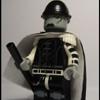
1930 Ford Model AA Truck RATical Industries
Perterz posted a topic in LEGO Technic, Mindstorms, Model Team and Scale Modeling
Hello, I’m Kevin, 32 years old from Willebroek, Belgium. I’m now building a Castle themed setting which is nearly finished. My latest MOC is this Custom truck, I finished this in late November 2017. The car is based on a 1930 Ford Model AA truck with custom chassis, RWD drivetrain, suspension and several other details. I tried to incorporate as many technical details as I could. Since it’s brick built, those technical details don’t work, they are esthetical except for steering.. More on Flickr -
Red five-car electric passenger train set (60051 / 7745 MOD)
Murdoch17 posted a topic in LEGO Train Tech
This electric high speed passenger train was inspired by both 7745 (High-Speed City Express Passenger Train Set) from 1985 and 60051 (High-Speed Passenger train) from 2014. The train features two locomotives (with no motors in either), one club car and four coaches. The roof of each car comes off to get at the inside, and all but the locomotives have interior details such as tables and chairs. (The cab cars are supposed to have generators and mechanical details, but I couldn't make it look good so they were removed.) The cabs on the two locomotives have computer screens for the drivers, but the rest of the open space is empty. You can add in PF / or 9v motors to either (or both!) of the locos, but I did not due to my personal preference of hand pushing things around. This car is one of four identical ones that all have removable roof sections. The club car's top roof section is removable to get at the upper floor, but the lower section is not accessible at all. (I did try unsuccessfully to make it work. The LDD file for this model is at brick safe. Please note, the red of the train can be completely replaced by blue, if you wanted to give it some variety. Comments, questions and suggestions are always welcome! -
Hi all, Embarked on this project after having a bunch of green wheels left over from giving my Flying Scotsman black ones instead. The P2's were built in the 1930's and designed by Sir Nigel Gresley. They went through many looks throughout their time, but the most unique and original was the one i've built below. All were scrapped, but two new ones are being built for mainline running! The first, No 2007 'Prince of Wales' is due to be finished in 2020, built by the same folks who built No 60163 'Tornado'. The build is 6-wide with Power Functions in the tender. I'm looking into ways of detailing it with stickers and prints in future! This started as a digital design, like many engines I build: A photo of the engine with my Scotsman and Mallard builds:
- 7 replies
-
- cock o the north
- p2
-
(and 5 more)
Tagged with:
-
4-8-2 streamlined steam locomotive with Ohio Pacific passenger train
Murdoch17 posted a topic in LEGO Train Tech
Please NOTE: There never was a Ohio Pacific railroad in the real world, but in my fictional universe, it never made it to the California coast, just to Denver, Colorado at it's western-most terminal with New York City being it's eastern-most point. As such, this locomotive is entirely fictional, with the paint scheme for the coaches inspired the real-world Missouri Pacific. This model was inspired by user @brickblues and his 4-6-2 Mallard-styled steam locomotive. My version of the engine is a 4-8-2, which means it has four leading, eight driving, and two trailing wheels, making it a Mountain type locomotive. The engine is streamlined with a blue shell around the boiler with tan and white stripes in places. The tender is supposed to say "Ohio Pacific" in printed 1 x 1 tiles, while the cab is supposed to say 6093 (also in printed tiles). The cab of the loco should features this print for the firebox door that is lacking in the LDD file. The baggage car features opening double doors for the baggage end and single doors for the passenger end. The three coach cars are identical with two opening doors at either end. The observation car features a open-air rear platform for looking at the passing scenery. This train is on the to-build list (which is getting longer all the time!) in real bricks. As usual, comments, questions, complaints, and suggestions are always welcome!- 5 replies
-
- 4-8-2
- streamlined
-
(and 8 more)
Tagged with:
-
4-4-2 "Atlantic" steam locomotive with Great West passenger train
Murdoch17 posted a topic in LEGO Train Tech
I don't see many 4-4-2 Atlantic types steam locos around in LEGO, and even less orange-colored trains besides the TGV-like Horizon Express and SP Daylight 4449. This should fix both problems at the same time, and yes, it's build-able in this color in real life. The Atlantic type 4-4-2 (4 leading, 4 driving, 2 trailing) was the top-of-the-line express train hauler in the middle 1890's to early 1910's. Some continued right up until the end of steam in the Fifties, with the Hiawatha's of the Milwaukee Road hitting 100 MPH speeds daily with this wheel arrangement. The engine should have "3110" printed on it's cab and "GREAT WEST" on it's tender in 1 x 1 tiles. The cab of the loco with four printed gauges and the firebox door. Four identical passenger cars in matching orange paint-scheme are pulled by the Atlantic-type steam locomotive. The words GREAT and WEST are supposed to be printed on the 2 x 4 tiles on either side of the cars. Here you can see the whole train at once. I'm not sure when or if this loco and it's consist will be built, but if it is I will update this post here with better, real-world photos. LDD file available at this link here. As usual, Comments, Suggestions, Questions, & Complaints are always welcome! -

Replacing for frame to make VX engine
blondasek posted a topic in LEGO Technic, Mindstorms, Model Team and Scale Modeling
Hello Guys, Do anyone of you made some frame which can "replace" this part? Technic, Pin Connector Block 1 x 5 x 3 To be honest, I am just tired of trying to make it right. I have two of that parts in 42069, but I don't want to disassemble that model. I was trying to find something on google and youtube, but I didn't. Thank you in advance for help!- 10 replies
-

Need Help Replicating Historic Engine System
GeorgeCrecy posted a topic in LEGO Technic, Mindstorms, Model Team and Scale Modeling
Dear fellow LEGO enthusiasts, I am in dire need of some help from you folks who are definitely more knowledgeable than I. In this case, I am needing help with the replication of the RMS Titanic's Reciprocating Engines and Turbine. I am in the midst at the moment of working on the project below, though I have not updated it in a great while due to university work. See this link here for the project thread. But this is a minifig scale project, with every door, every window accounted for. This means that in regards to the engines, I am also seeking to make them at least somewhat true to scale and able to work as intended. Obviously this is a big job of some top notch Edwardian-era engineering, but I am hoping that there might be some out there not as technically-challenged (pun totally intended) as I am, willing to help me get this part of the project off the ground. Some of the features I I am looking for include a fully air-powered system, where the air supply would come from tanks hidden in the mock-boilers, that are then funneled at somewhat high pressure to the Triple Recip. Engines, which means that the pressure would go down as it goes through each cylinder (HP, IP, then two LPs). The leftover air at a much lower pressure then goes to a junction that can either go to the Parson's Turbine at what was historically 4 psi, or can go directly to the condensers. With the latter I intend just to make the outside of it and hide inside some custom compressors like this. That would then return to the original air supply. With this I am hoping that I will have a self-supplying system with ideally no more than 5% leakage, or enough compressors that leaks are compensated for. WIth the Parson's Turbine, that can be an accurate shell with whatever is needed inside to include a working turbine, and probably with an gearbox and ascending set of gear ratios to give it the necessary torque. These engines and turbine are meant to actually turn the propellers, perhaps even in water! Some other features would include a replica of the Brown-type reversing engine on the side of each of the Recip engines, making it so that the Stevenson-type eccentrics can change the direction of rotation. Considering the scale, the reversing engine doesn't technically have to be much more than a slightly-hidden piston that does the required job, but any more realism doesn't hurt. If something like this is possible, please let me know. I am really wanting to continue with this project, and this is a central part of it. But without the pieces in front of me instead of on a computer screen, what little I know of engineering definitely doesn't help without that tactile interaction. Thanks for your time, and I look forward to your replies! If it is possible, then I can follow up with the intended dimensions. Here are some references for any that wants some: View of turbine and condensers through wall from main engines rotor shaft model of port-side recip. engine overall basic view path of the steam of original, pressurized air for mine- 24 replies
-
- turbine
- air-powered
- (and 5 more)
-

[MOC] Various 6-Wide British Locomotive designs (Mallard, Tornado... Flying Sausage...)
Bricksmith posted a topic in LEGO Train Tech
Hi all, I recently went on a bit of a designing spree during my holidays and thought I'd share the results. I've been developing these models at a slightly smaller scale than usual (Hence 6-wide), but it's been a fun challenge and one I would like to develop into more actual models if I have the time. I thought i'd share them all at once as I didn't want to clog the forum xD MALLARD (LNER A4 Class) The first design I did of this scale and the only model I have physically made. You'll notice that the boiler is different from the render as those arch blue pieces are horrendously expensive. If you are interested I go into more detail about it in this MOC video on my Youtube channel. FLYING SCOTSMAN (LNER A3 Class) Classic design to follow on from. The wheelbase is copied from my Mallard build, which forms the base for all my pacific class designs. TORNADO (BR Peppercorn A1 Class) Developed this by tweaking the Flying Scotsman build. I know of better ways to do the smoke deflectors, but unfortunately the parts weren't available on LDraw. GWR HALL CLASS I developed this for a friend's Hogwarts Express build, but also as a bit of fun. With a couple of tweaks this could always pass for a King or a Castle. LMS ROYAL SCOT CLASS I think the front of this engine could be different if the parts were available, and I wasn't able to do the wheel arches, but I'm happy with the tender and the shaping of the cab. SR KING ARTHUR CLASS I thought i'd try and to an engine from each of the major British steam companies. The obvious one for Southern was a Merchant Navy or West Country, but I've already done a lot of Pacific engines. BR STANDARD 4MT TANK The one major drawback is that it isn't motorised. I've been considering making a motorised carriage that would not only move un-motorised engines, but help the bigger motorised ones around the corners better. That, of course, comes with its own set of drawbacks. THE FLYING SAUSAGE (LNER 10000 - 'HUSH HUSH') I wasn't lying in the title, this is such a wonderfully absurd engine that I had to try it. my only major niggle is the colour scheme, but I suppose experimental engines are hardly worth sprucing up. I hope you've found these MOCs interesting, I'd love to hear any tips, comments or suggestions for future builds! I'm planning on building the Flying Scotsman before long, then maybe a set of coaches. -Isaac -
Hello eurobricks train tech!! I bring you today my first lego train moc. I am new to eurobricks so please point out any mistakes I may have made. I was inspired by scotnick's 14xx and decided to have a go at it. The construction of the model went very smoothly and I had originally used the 2x4 turntable for the trailing wheel. When I tested it, it wouldn't function properly and I had to replace it. So for two hours, I experimented with many different designs until I came up with one utilizing the ring plate and that err...longish blueish pin thingy! But it fit the bill and I'm happy! It is powered by the lego train motor with lights for the Lantern and the receiver in the cab. I do plan to build a autocoach to go with it which will house the battery box. Another problem I encountered was I had none of the I think 4x4 round bricks with holes in dark green, and since I don't buy any parts, I just used the 4x6 long half circle brick (I'm not that great with piece names!) And used some double sided tape to stick on the domes and an ausini clone brand chain for the chain on the front (I'm unarmed don't shoot! ) So stay posted guys, and look out for more projects coming soon! Comments and tips are very much welcome.
- 1 reply
-
- train
- locomotive
-
(and 5 more)
Tagged with:
-
-
- tc10
- pneumatic
-
(and 82 more)
Tagged with:
- tc10
- pneumatic
- technic
- moc
- engine
- 4 stokes
- nz
- lego technic
- v8
- impro
- tv
- wliia
- whose line
- comedy
- star wars battlefront
- the empire strikes back
- 1.4 fd p-tower
- battle of hoth
- at-at
- at-st
- star wars rebels
- rebel alliance
- a new hope
- return of the jedi
- rogue one
- city
- town
- bank
- key bank
- lego ideas
- landmark
- moc
- arc de triomphe
- france
- ag
- mantis
- technic
- scania
- truck
- yellow
- lowloader
- moc
- cv-project
- trailer
- mall of america
- lego shop
- lego brand retail
- lego store
- moa
- truck
- rc
- challenge 4a
- oleon
- 3rd party
- kit
- drone
- lego
- modular
- block
- lego
- modular
- building
- ideas
- brick
- minifig
- afol
- moc
- house
- falcon
- millennium
- design
- vedosololego
- micro
- custom
- furniture
- room
- diorama
- advent
- calendar
- city
- 2016
- octan
- ag
- rexgain
-

[MOC] Car TSI Engine
camellia posted a topic in LEGO Technic, Mindstorms, Model Team and Scale Modeling
Hello, my friends! Today, I show my MOC model: a car Twins-charge fuel Stratified Injection Internal Combustion Engine whose abbreviation is TSI Engine. Please give me your precious ideas and comments. 1. This MOC model almost includes every component of a real car engine: Cylinder Crankshaft Camshaft Timing belt Twinscharge fuel Stratified Injection Distributor fuel Injection System Distributor Spark Plugs System HALL circuit Lubrication Cooling Generator 2. Besides using LEGO bricks and parts, I add a special electronic component. It is HALL circuit. It uses a HALL chip to simulate Distributor Spark Plugs System. 3. Just as the principle of a generator and the principle of a motor are reverse, I use a motor to drive this engine to simulate the process of a running engine. And each component is running as a real-time sequence. When running, it looks like a real engine more. 4. I hope when you touch this model, you will get more learning of a car engine. I also post a video of learning car engine in Youtube and my website. Now let us view this product. Just enjoy it. Fig. 1 This engine has 4 Vertical Cylinders. Fig. 2 Crankshaft with 4 Pistons, each delays 90 or 180 degrees. Fig. 3 Suction and Exhaust Camshafts with Oblong Lobes to lift Poppet Valves. Fig. 4 Timing Belt. The Medium Blue one is Cooling Water Pump which is driven by Timing Belt. The bottom gear is driven by the crankshaft. The top right gear drives the Suction Camshaft while the top left gear drives the Exhaust Camshaft. The middle left gear is used to adjust the tension of the Timing Belt. Fig. 5 Light blue pipes are Fresh Air Suction: the bottom is Mechanic Charger and the top is Turbine Charger. Fig. 6 Gray pipes are Exhaust pipes: the Exhaust Gas drives the Turbine. Fig. 7 Turbine Fig. 8 Distributor Fuel Injection System Fig. 9 Distributor Spark Plugs System: 4 diode simulate Spark Plugs. Fig. 10 HALL chip Fig. 11 A Magnet is mounted on the Flywheel to active HALL Effect Sensor to detect the position of each piston. Fig. 12 The principle of HALL Effect Sensor. Fig. 13 Lubricate Oil Pump is driven by Crankshaft with Gears. Fig. 14 Perspective View Fig. 15 HALL Effect Sensor (DIY) which is mounted at the end of the Crankshaft to detect the position of each Piston. Fig. 16 Assembled Model Connecting to batteries, this Engine model can operate, just watch the video in I also make a learning video to talk about car engine. I hope my work will bring happiness and learning to you. Please kindly visit http://www.camellia.xin -

Self-Powering LPE Idea
RcRacer99 posted a topic in LEGO Technic, Mindstorms, Model Team and Scale Modeling
I am a fairly new member to the Lego community but have immediately been interested in LPEs. Here is my idea: Has anybody ever built or thought about powering a compressor with the engine itself. So instead of having a compressor powered by a PF motor, connect the crankshaft of the engine to it. This removes the need for the motor entirely. You will obviously need some sort of external pump to get the engine turning over as a start, similar to a starter motor. The other problem I have thought of is that it will create a never ending cycle of the engine going faster and faster and faster, assuming that the compressor can produce more air than the engine needs and vice versa. I currently do not have the resources to test this myself so any feedback would be amazing! Is this a stupid idea? Are there other things I haven't thought of? What are your thoughts on this project? Thanks!- 7 replies
-
- compressor
- pneumatic
-
(and 2 more)
Tagged with:
-
Six-track railroad locomotive transfer table - real world MOC
Murdoch17 posted a topic in LEGO Train Tech
I had a spare truss bridge model lying around and thought it could use a revamp. Then I thought of the turntable I had designed, and realized it could use a transfer table companion model. Thus, this transfer table was finished just today. The whole table moves on four wheels at the edges and three guide-ways in the center. The model sits on four vintage 32 x 32 stud base-plates arranged in a square. I'm currently thinking about slicing up what's left of a gray 48 x 48 into a strip for the leading tracks to rest on. The height from the track to the top of the truss-work is a hair shorter than 13 1/3 bricks tall, which is tall enough for most locomotives but not enough for cabooses, extra-tall double stacked container cars and double-decker lounge cars. The length of the table is four tracks long, which is plenty for any of my single-unit locomotives or official LEGO models. (Diesel cab and booster units will have to be split up to fit, however.) In progress shot of me loading a 4-8-2 steam locomotive onto the table. Lining up the tracks as perfect as can be is key to keeping the loco on the rails and steady! Moving any loco sideways is easy enough to do with one hand... lining it up and rolling the engine off, however, needs steady two hands and a good eye. A better pic of it lined up at the shed track after unloading the steamer. Please NOTE: There is a two stud gap (and a bit of incline) between table and lead-in track: It is NOT 100% flat! Comments, suggestions, complaints, and compliments are always welcome!- 6 replies
-
- moc
- transfer table
-
(and 8 more)
Tagged with:
-
This engine is modeled after the GE 44 ton switcher locomotive. Why 44 tons, you may ask? I give you the answer from the Wikipedia article on this loco type: This locomotive's specific 44-short ton weight was directly related to one of the efficiencies the new diesel locomotives offered compared to their steam counterparts: reduced labor intensity. In the 1940s, the steam to diesel transition was in its infancy in North America, and railroad unions were trying to protect the locomotive fireman jobs that were redundant with diesel units. One measure taken to this end was the 1937 so-called "90,000 Pound Rule" :[citation needed] a stipulation that locomotives weighing 90,000 pounds (41,000 kg) – 45 short tons – or more required a fireman in addition to an engineer on common carrier railroads. Industrial and military railroads had no such stipulation. The 44-ton locomotive was born to skirt this requirement. The loco is bi-directional, and doesn't have much to differentiate between the "front" or "rear" expect for the air horn and exhaust stack on one end in real life. My LEGO model lacks these, so it's only way to tell which is front is by the headlights: clear for front, red for rear. I am going to name this loco WFP number 7007. (WFP stands for Wabash Frisco & Pacific, which is the name of a 12 inch gauge ride-on railway in St. Louis, MO.) They don't have a real 44 toner there, but do have a Fairbanks Morse H10-44 (number 704) in the same color scheme, so I made this engine as a companion to the H10-44. In the spoiler tag below, you will find a real life picture of a 44-toner loco. (I got the picture from railpictures.net, It is NOT mine!) Just for comparison purposes, here is the H10-44 I was talking about. NOTE: The H10-44 is NOT included in the GE 44-ton's LDD file! The (updated) LDD file for the GE loco is available here. Build updated 3-14-17 with a better 44 ton GE unit, courtesy of Henry Durand over on Facebook's LEGO Train Fan Club. Thanks Henry! Comments, Questions, suggestions and complaints are always welcome!
-
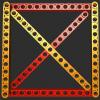
Instruction V-8 Engine 32-Valve Lego Technic
Nikolay posted a topic in LEGO Technic, Mindstorms, Model Team and Scale Modeling
Instruction V-8 Engine 32-Valve Lego Technic instructions: https://yadi.sk/d/P6II1vIEyBNT4 Implemented: 1. 8 Cylinder, 4 strokes, 32 Valve Engine 2. Valve Working close to the real Engine. 3. Intake and Exhaust Systems 4. Ignition system (spark ignition) 5. Supply system 6. Attachments Equipment 7. Oil Pump 8. Engine Support Cushions 9. The Belt Tensioners, and Other stuff Subscribe to the Shannel https://goo.gl/rmEAjx -

[MOC] V8 32 VALVE ENGINE LEGO TECHNIC PART 1
Nikolay posted a topic in LEGO Technic, Mindstorms, Model Team and Scale Modeling
[MOC] V8 32 VALVE ENGINE LEGO TECHNIC PART 1 Hello everybody! I hasten to introduce you to a new job, V - shaped 8 cylinder 32 valve engine Lego Technic. This is the first part of the video. All the fun ahead. On this basis, you can do a lot of other engines v- shaped circuit or row. Instruction will be paid. Next proe plan to do on its base V - shaped 6-cylinder turbo engine for the installation of a new car bolid Formula-1. Implemented : 1. 8 Cylinder 32 Valve Engine 2. Valve Working close to the real Engine. 3. Intake and Exhaust Systems 4. Ignition system (spark ignition) 5. Supply system 6. Attachments Equipment 7. Oil Pump 8. Engine Support Cushions 9. The Belt Tensioners, and Other stuff YouTube Channel Subscribe to the Shannel Foto: MOC V8 32 VALVE ENGINE LEGO TECHNIC PART 1 by Nikolay Zubov, on Flickr MOC V8 32 VALVE ENGINE LEGO TECHNIC PART 1 by Nikolay Zubov, on Flickr MOC V8 32 VALVE ENGINE LEGO TECHNIC PART 1 by Nikolay Zubov, on Flickr MOC V8 32 VALVE ENGINE LEGO TECHNIC PART 1 by Nikolay Zubov, on Flickr MOC V8 32 VALVE ENGINE LEGO TECHNIC PART 1 by Nikolay Zubov, on Flickr MOC V8 32 VALVE ENGINE LEGO TECHNIC PART 1 by Nikolay Zubov, on Flickr MOC V8 32 VALVE ENGINE LEGO TECHNIC PART 1 by Nikolay Zubov, on Flickr MOC V8 32 VALVE ENGINE LEGO TECHNIC PART 1 by Nikolay Zubov, on Flickr MOC V8 32 VALVE ENGINE LEGO TECHNIC PART 1 by Nikolay Zubov, on Flickr MOC V8 32 VALVE ENGINE LEGO TECHNIC PART 1 by Nikolay Zubov, on Flickr MOC V8 32 VALVE ENGINE LEGO TECHNIC PART 1 by Nikolay Zubov, on Flickr MOC V8 32 VALVE ENGINE LEGO TECHNIC PART 1 by Nikolay Zubov, on Flickr- 9 replies
-
- lego technic
- 32 valve
-
(and 2 more)
Tagged with:
-

Lego USS Monitor Steam Engine
Boxerlego posted a topic in LEGO Technic, Mindstorms, Model Team and Scale Modeling
Hello Everyone, Check this Air engine Out. We can all agree that Pneumatics wont do this. This Air engine is a recreation of the USS Monitor Steam Engine which is an early American War Ship that was built by Swedish American John Ericsson. This engine is pretty interesting with how it was designed to function. Its very elaborate engine design with opposed cylinder piston that functions a lever arm which is connected to a center crank shaft and it also is name the vibrating lever engine. It was such a neat build I made more then one videos to. I made another video where you see inside and can watch the cylinders move up and down. -

Lego Oscillating Air Engine
JJ2 posted a topic in LEGO Technic, Mindstorms, Model Team and Scale Modeling
Hello After watching this I started to wonder if it was possible to build it with Lego and after some research I started building.IMG_0642 by JJ2Sam, on Flickr The engine is extremely simple with only two holes in the piston housing allowing air in or out making it robust to use. Since it is only a single cylinder it uses a flywheel to keep the cam rotating. IMG_0640 by JJ2Sam, on Flickr Unlike internal combustion engines found in your car where the piston is in a rigid housing or block making the piston have to have a ball joint allowing it to travel up and down this engine allows the entire piston and housing to rock or oscillate. IMG_0641 by JJ2Sam, on Flickr I have made instructions A ReBrickable parts list will be made. Thanks for reading. -
Hello! It's been awhile since I posted anything in this forum, but I wanted to show some of the progress I've made on a layout I've been working on by showing off the engine I'm going to use on it, namely an S1 Switcher. The engine itself still needs a bit of work on it, namely the height, but it does look nice working the harbour I've built. Building the nose of the engine proved somewhat troublesome, but I'm happy with the way it turned out. The back needs a bit of work done to it, but I'm relatively happy with the cab. The image above shows how the cab roof comes off in order to place figures inside. I've also built a transfer caboose to go alongside this engine that I hope to have posted soon. Feedback would be appreciated!
- 5 replies
-
- S1 Switcher
- Engine
-
(and 2 more)
Tagged with:


.thumb.jpg.06400152156e5e95cce608e8f2153c26.jpg)

